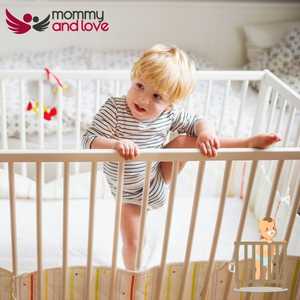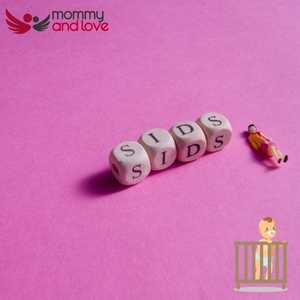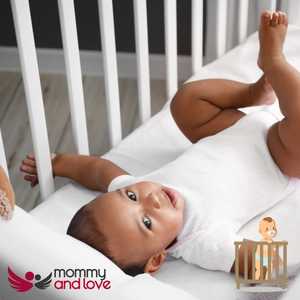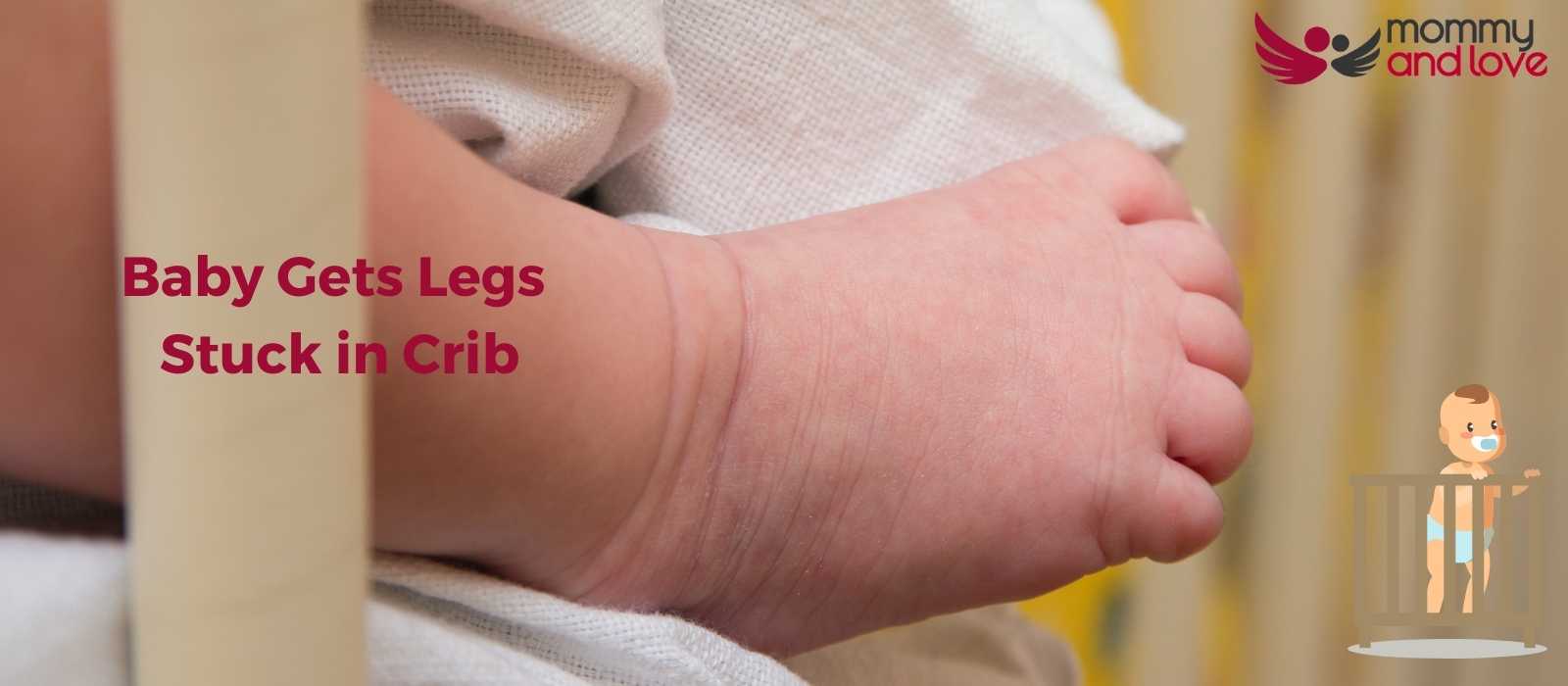It’s every parent’s worst nightmare: the baby gets her arms and legs stuck in the crib. This can happen if the crib is too small or if the baby’s legs are too long.
To keep your baby from getting their legs stuck in the baby’s crib, make sure the crib is up to standard and use a sleep sack or wearable blankets. Do not use crib bumpers even airy mesh bumpers, crib tents, crib rails guards, vertical crib liners, bumper pad, bumper tie, crib covers or sleep positioners because they can be dangerous.
How to Prevent Crib Injuries

Unfortunately, every year there are reports of infants being injured in their cribs. While some of these injuries are due to defective products, many can be prevented with proper care and safety precautions.
Here are some tips and safety measures on how to prevent baby-related problems and keep your child safe while sleeping:
- Make sure the mattress is firm and fits snugly in the baby’s crib. A soft mattress can cause Suffocation.
- Don’t put pillows, quilts, comforters, soft toys or other soft bedding in the crib. These can also lead to suffocation.
- Use a tight-fitting sheet that is specifically made for a baby’s bed.
- Keep the crib away from windows, cords, or anything else that could be a strangulation hazard.
- Never put your baby on his stomach while sleeping. This increases the potential risk of Sudden Infant Death Syndrome (SIDS).
- Avoid using a crib bumper or sleeping positioners at the same time.
- Don’t use the old family crib because you don’t know if its structural integrity has already been compromised or if it has toxic materials.
By following these simple tips, you can help ensure that your baby’s arms and legs are safe while sleeping in his crib.
Are Crib Rail Covers, Crib Bumpers, and Crib Tents Safe?
The answer to this question is not as simple as a yes or no. Each of these products has the potential to be safe or unsafe, depending on how it is used.
Crib rail guards are a safety device used to protect babies from bumping their heads, and also to protect the crib from being damaged by the baby’s arm and teeth.
Bumper pads are often used to keep young babies from rolling out of their cribs. However, parents are advised against using them because they may cause infant suffocation risk, strangulation, or entrapment. See our guide to safe sleeping for babies.
Crib tents are designed to keep babies from climbing out of their cribs.
The American Academy of Pediatrics AAP warns parents against using crib rail covers, bumper pads, and crib tents because they pose an unnecessary safety risk.
Do Sleeping Positioners Prevent Sudden Infant Death Syndrome?

Sleep positioners are devices that are meant to keep an infant in a specific position such as a confined position during deep sleep. They are often used in an effort to reduce the risk of SIDS.
The American Academy of Pediatrics (AAP) has released a statement warning parents against using sleep positioners for their infants. The AAP believes that there is not enough evidence to support the claim that sleep positioners are effective in reducing the life-threatening risk of Sudden Infant Death Syndrome (SIDS).
The US Food and Drug Administration warned parents against using sleeping positioners as well.
There have been reports of infant deaths associated with the use of sleep positioners. The AAP is urging parents to exercise caution when using any type of sleep positioner.
Can Babies Break Their Leg in a Crib?
Most parents worry about their babies getting hurt while they sleep. And one of the biggest concerns is whether or not a baby can break their leg in the crib rails.
The answer is yes, but it’s very rare. There are two main ways that it can happen:
The first way is if the baby falls out of the crib and lands awkwardly. This can happen if the crib is not set up properly or if the baby is able to climb out of it.
The second way is if the baby’s leg stuck in crib rails. This can happen if the bars are spaced too far apart or if the baby’s leg is small enough to slip through.
If you’re worried about your baby’s safety, make sure to follow all the safety guidelines for setting up the crib and using it properly.
How Do You Keep the Baby From Getting Arms and Legs Stuck in the Crib?

If you’re a parent, you know that one of the most important things is keeping your baby safe. And one of the places where babies are most vulnerable is in their cribs. A baby’s legs can easily get stuck in between the slats of a crib, which can lead to serious injury.
So how do you keep your baby from getting stuck in their crib?
The best way to prevent your baby from getting stuck is to use a crib with solid sides. This type of crib is much more difficult for a baby to get their limbs or other body parts stuck in.
You can also purchase special covers that go over the slats of a traditional crib, which will also help to prevent your baby from getting stuck.
If you’re using a traditional crib, make sure that the slats are no more than two and a half inches apart. This is the maximum width that a baby’s head can fit through, so it’s unlikely that they’ll be able to get their leg stuck in crib.
You should also regularly check the crib to make sure that there are no loose or missing slats. Even a small gap can be enough for a baby’s limb to get stuck.
What Can I Use Instead of a Crib Bumper?
If you’re looking for an alternative to crib bumpers, there are a few options available. You could use a baby gate to keep your little one safe and secure in their crib.
Alternatively, you could purchase a special mattress that has been designed for babies and young children. This type of mattress is usually made from firm foam or latex, and it has a water-resistant cover. Whichever option you choose, make sure that you keep your baby’s safety in mind at all times.
How Do I Stop My Baby From Rolling to the Crib Bar?

One of the most common questions I get as a baby sleep consultant is how to stop a baby from rolling to the crib bars and getting stuck. There are actually a few things you can do to help prevent this from happening.
First, allow your baby to practice rolling around in the crib. This will help them get used to the sensation of rolling and will also help them to develop the muscles they need to be able to roll back onto their backs.
Second, put your baby in a sleep sack or wearable blanket. Sleep sacks can keep your baby’s legs inside so they don’t get stuck. This will help to keep your baby warm, snug and secure in the crib so that they are less likely to roll around.
Finally, tighten the crib mattress. This will make it more difficult for your baby to roll to the edge of the crib and will help to keep them safe and sound.
At What Age Do Babies Get Out of the Crib?
Most babies will be ready to sleep in a toddler bed by 18 to 24 months old. However, there are a few things you should keep in mind before making the switch:
- Your baby’s physical development: If your little one is climbing out of the crib or fling herself across the crib hard enough, it may be time to start thinking about a toddler bed.
- Your baby’s sleep habits: If your child is sleeping soundly through the night and taking regular naps during the day, he or she may be ready for a bigger bed.
- Your family’s needs: If you have another baby on the way or you’re moving to a new house, it might be time to make the switch.
When Should We Switch to a Toddler Bed?
There’s no definitive answer to this question, as every child is different. However, there are a few general guidelines you can follow.
As your baby grows and reaches the age between 18 and 24 months old and is starting to climb out of their standard crib, it’s probably time to switch to a toddler bed.
You may also want to switch if your child is showing an interest in climbing out of their crib, even if they haven’t actually done it yet.
Interestingly, you can buy a crib that can transform into a full twin bed.
Switching to a toddler bed too early can be disruptive for some children, so it’s important to make sure they’re ready before making the switch.
If you do decide to switch to a toddler bed, there are a few things you can do to make the transition easier for your child.
First, let them help pick out their new bed. This will make them feel more comfortable with the change.
You can also try putting the bed in the same room as their crib, so they don’t feel like they’re being isolated.
Finally, make sure to praise them when they sleep well in their new bed. This will encourage them to keep up the good work.
Making the switch to a toddler bed is a big change for your child. However, if you follow these guidelines, it can be a smooth and positive transition.
Are Crib Slats Safe?
This is a question that many parents ask, and rightfully so. After all, your baby will be spending a lot of time in their crib, and you want to make sure that they are safe.
Crib slats are generally safe, but there are a few things to keep in mind.
According to the United States Consumer Product Safety Commission, the spacing between the crib slats should be no more than two and a half inches. This is to prevent your baby’s head and legs from getting stuck between the crib slats.
Additionally, the crib slat should be made of solid material, such as wood or metal. This is to prevent them from breaking easily.
Fortunately, even if a leg gets stuck between the slats it’s virtually impossible to break them by doing so.
Conclusion
Although it may be tempting to use crib bumpers, sleep positioners, and other products to keep your baby safe in their crib, the truth is that these items can actually do more harm than good.
The best way to avoid your baby’s legs from getting stuck in the crib is to make sure that your crib meets safety standards and use a wearable blanket or sleep sack instead. By following these simple tips, you can prevent stuck legs and help ensure that your little one has a safe and comfortable place to sleep.




